Captivating Animal Clips: Discovering Wildlife's Wonders
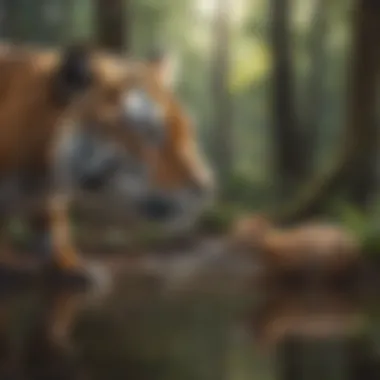
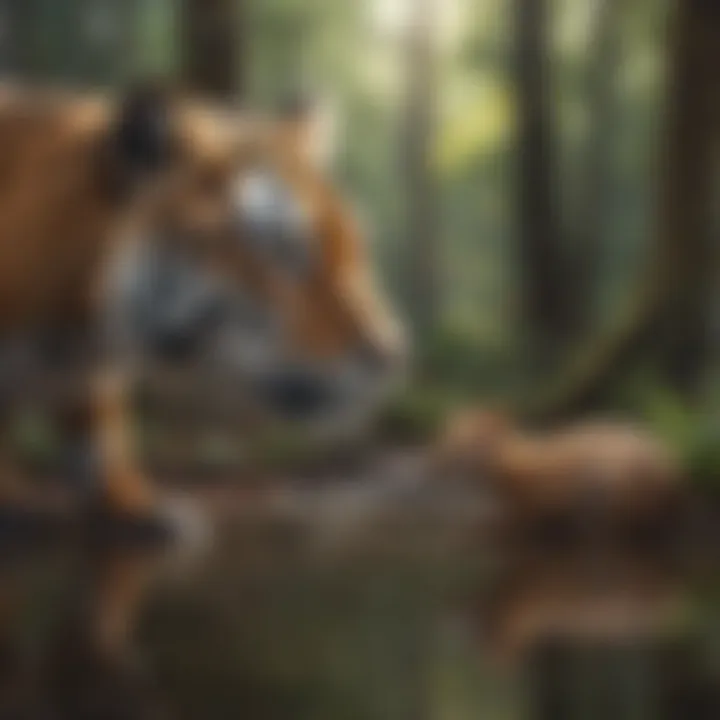
Nature Topic Overview
Exploring the world of animal clips takes us on a fascinating journey through the rich tapestry of the animal kingdom. These short video snippets, often filled with astonishing moments, offer a window into the behaviors, habitats, and interactions of various species. Animal clips not only entertain but serve as valuable tools for education, especially for young minds eager to learn about the wonders of nature. With the rise of platforms like YouTube and social media, accessibility to these eye-catching displays has never been easier.
In this vibrant exploration, we’ll discover the diverse formats of animal clips, from documentaries and reels on social media to educational programs that capture a child's imagination. As we uncover the many layers of these clips, we’ll also highlight their educational significance, their role in vital conservation efforts, and the importance of biodiversity, ensuring that kids, parents, and educators alike can appreciate the richness of life on Earth.
Fun Facts and Trivia
Animal clips often come packed with tidbits that leave viewers wanting to learn more. Here are some intriguing facts guaranteed to pique curiosity:
- Did you know? Crows are excellent problem solvers and can use tools to gather food.
- The Antarctic blue whale is the biggest animal to ever roam the Earth, growing up to 98 feet long!
- Sea otters have a favorite rock they use to crack open shellfish, proving they can have preferences just like us.
Integrating visuals and interactive elements like animated GIFs or playful quizzes can greatly enhance the learning experience. For example, a quick quiz after watching a clip about lions could ask, "What does a lion's roar tell us?" This keeps them engaged while reinforcing what they just saw.
Wildlife Explorations
Different animal species each have unique stories to tell. Our clips invite viewers to dive into the realms of various habitats, showcasing the wildlife that thrives there. Consider the vibrant coral reefs, home to colorful clownfish and majestic sea turtles.
Notable Species:
- Clownfish: These orange and white striped fish have a symbiotic relationship with sea anemones, providing protection against predators.
- Giant Pacfic Octopus: Known for its intelligence, the octopus can solve puzzles and even escape from enclosures.
- African Elephants: The largest land mammals, they operate in tight family units that exhibit strong emotional bonds.
To further the learning journey, interactive features like nature quizzes and puzzles can make understanding wildlife even more fun. For instance, a riddle about where a specific animal likes to live or what it eats helps solidify knowledge while engaging in play.
Environmental Awareness
The relationship between animal clips and conservation initiatives cannot be overstated. By showcasing the beauty of animals and their ecosystems, these clips raise awareness about threats like habitat destruction and climate change.
Simple Tips for Kids:
- Reduce waste: Teach them to recycle and properly dispose of trash to keep the planet clean.
- Plant trees: Kids can join local initiatives to plant trees in parks or schools, contributing to urban wildlife.
- Support wildlife shelters: Encouraging donations or volunteering time can make a real difference in protecting animal species.
By engaging with animal clips, we can inspire the next generation to care for our planet’s incredible diversity.
DIY Nature Activities
Emphasizing hands-on learning creates lasting memories. Here are a few engaging activities that children can enjoy:
Nature Craft Ideas:
- Create Animal Masks: Using paper plates and colored materials, kids can transform into their favorite animals.
- Build a Bird Feeder: A simple project using pine cones, peanut butter, and birdseed can introduce children to the joys of backyard wildlife.
- Nature Scavenger Hunt: Create a list of items to find in local parks, encouraging outdoor exploration and appreciation of nature’s beauty.
These DIY projects, along with outdoor exploration, can consolidate their learning while instilling a deep respect for wildlife and its conservation.
Prelims to Animal Clips
Exploring the world of animal clips invites readers into a vibrant realm where wildlife encounters are captured in motion. Highlighting the significance of these clips in both education and entertainment, it becomes clear that animal videos are more than just delightful distractions; they serve as vital tools for understanding our planet's diverse species.
Definition and Importance
Animal clips can be defined as short video sequences showcasing various animals and their behaviors, whether in their natural habitats or through educational contexts. These clips serve a multiplicity of purposes:
- Educational Value: They provide an engaging method for young audiences to learn about animal behavior, ecosystems, and conservation.
- Inspiration for Curiosity: With captivating visuals, children are often motivated to ask questions and explore the world of nature beyond the screen.
- Cultural Footprint: As these clips circulate widely on social media and educational platforms, they contribute to a shared cultural understanding of what wildlife entails.
The importance of animal clips is illustrated through their ability to make learning tangible. For young learners, seeing animals in action activates a different part of the brain compared to traditional learning methods, leading to enhanced excitement and retention of information.
The Evolution of Visual Content
The evolution of visual content can be likened to the journey of the tortoise and the hare; it has moved slowly, yet steadily, toward sophistication. In the earlier days, wildlife documentaries mirrored a straightforward narrative style, relying heavily on narration to articulate animal behaviors. Fast forward to today, where the integration of technology has transformed how we perceive animal life.
Some key points in this evolution include:
- Switch from Film to Digital: As technology advanced, so did the ease of filming and distributing high-quality content, allowing even amateur filmmakers to contribute.
- Shifts in Content Format: Short clips became the norm with the rise of platforms like TikTok and Instagram, adapting to shorter attention spans.
- Accessibility: Today, animal clips can reach a global audience instantly, fostering a collective awareness of wildlife issues.
In essence, the evolution of visual content is driven by the aim to captivate and educate. The changes reflect society's growing recognition of the relationship between humans and the animal kingdom, encouraging all to take notice and care.
Types of Animal Clips
In the modern digital age, animal clips have taken on various forms, each with a unique influence on how we perceive wildlife. From striking documentariess that showcase the vast complexity of nature to snappy clips that flutter across social media at lightning speed, the diversity of these videos has a significant role in both education and entertainment. With an increasingly visual culture, understanding the different types of animal clips is vital to appreciate their impact on fostering curiosity and empathy toward the animal kingdom. Below, we will explore the realms of documentaries, social media snippets, and animated representations, revealing the unique insights each format provides.
Documentaries and Educational Clips
Documentaries about animal behaviour are like the old reliable friends of visual storytelling. They offer a deep-dive into the often-hidden lives of various species. Educational clips, often based on documentaries, capture intriguing snippets that ignite curiosity among young audiences. These clips transport viewers to the very heart of the animal kingdom. They often emphasize facts that children might find fascinating, such as how much a blue whale weighs or the migration patterns of arctic terns.
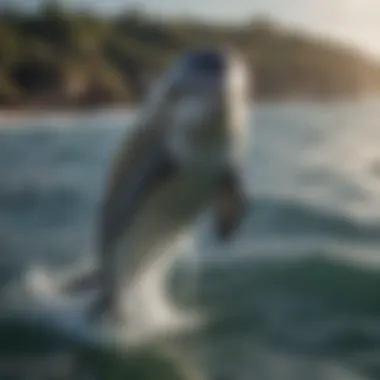
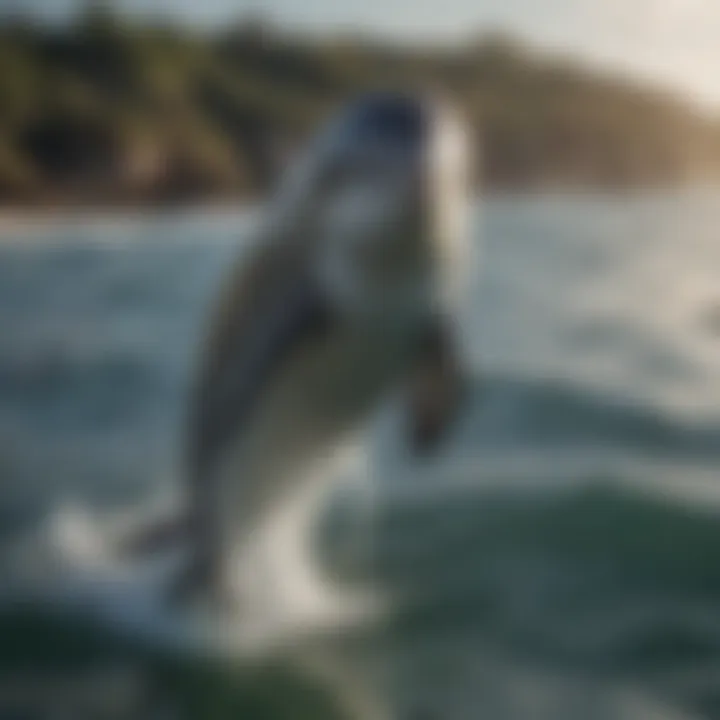
One notable example is the Planet Earth II, narrated by Sir David Attenborough, where young viewers can see animals in their natural habitats, learning firsthand about their behaviours and ecosystems. With documentaries, the richness of the experience is how they thread together visuals with informative narration, creating a balanced approach that educates while captivating. Here are a few key elements of why these types of clips matter:
- Engagement: Captivating visuals paired with educational commentary hook young minds.
- Learning Retention: Seeing animals behave in their natural environment enhances memory retention.
- Empathy Development: Documentaries help foster a connection to wildlife, promoting a feeling of responsibility toward nature.
"Learning about animals through powerful imagery creates a bond between viewers and nature, essential for inspiring future conservation efforts."
Short Clips for Social Media
In an era ruled by fast information, short clips have emerged as king. Platforms like Instagram and TikTok make use of brevity to deliver quick bursts of entertainment, often featuring adorable animal antics or surprising moments. These snippets can reach millions of viewers, tapping into global audiences quickly. The accessibility of social media allows for a wider dissemination of animal knowledge, fostering engagement in wildlife conservation in a very informal manner.
While these clips may sometimes lean more towards entertainment than education, they still spark interest. For instance, videos that show playful otters sliding down snowy hills can pique curiosity about their natural habitats. This kind of content often prompts questions among viewers that parents or educators can then build upon. Highlights include:
- Quick Consumption: Children can watch in short bursts, catering perfectly to shorter attention spans.
- Viral Potential: Clips that resonate can go viral, raising awareness widely and quickly about different species and habitats.
- Connects Communities: Social media creates a community of animal lovers, who can share knowledge and experiences, fostering learning across networks.
Animated and Illustrated Clips
Animated and illustrated clips carve out a unique spot in the spectrum of animal clips. They provide an alternative approach to learning, especially for younger audiences. Using vibrant colours, exaggerated behaviours, and imaginative narratives, these types of videos can teach lessons that are not only informative but also highly engaging. For instance, animated clips depicting how different animals hunt for food can explain complex ecosystems in a simplified yet appealing manner.
Additionally, illustrated stories can invite children to engage with species they may never encounter in real life, creating a curious gaze into the unknown. Consider the series Tayo the Little Bus, which, though not solely about animals, often features animal characters in different problem-solving scenarios. With these animations, some important points are:
- Engagement and Fun: Animation allows for creative storytelling that captures the imagination.
- Encouraging Curiosity: Mostly, kids are drawn to bright colours and characters they can connect with.
- Cultural Education: Animated clips can introduce concepts from various cultures, like folk tales featuring animals, broadening children's horizons.
In summary, the types of animal clips range from serious documentaries to engaging social media snippets and imaginative animations. Each format plays its part in educating children about the animal kingdom, nurturing empathy and wonder towards the great diversity of life on our planet.
Impact on Education
Understanding the impact of animal clips on education is vital. These short snippets of visual storytelling do more than entertain; they serve as valuable educational tools. With their captivating visuals and engaging narratives, animal clips can enhance a child’s learning experience in several remarkable ways.
Enhancing Learning Retention
When it comes to learning, one of the most critical aspects is retention. Studies suggest that people tend to remember information better when it's presented visually. Animal clips play a significant role in this regard. For example, watching a mother elephant gently encourage her calf to take its first steps can leave an indelible mark on a child’s memory. This emotional connection makes the learning experience more impactful.
Moreover, animal clips often simplify complex concepts. Instead of slogging through thick textbooks, kids can watch how certain species behave in their natural habitats. This not only makes the information stick but also aids in comprehension. Imagine a young learner trying to grasp the concept of migration. An engaging clip showcasing the journey of a flock of birds can explain the basics far better than mere words ever could.
Key Benefits:
- Visual Learning: Enhances comprehension and retention of information.
- Emotional Engagement: Connects learners to the content on a deeper emotional level.
- Simplification of Complex Topics: Makes complicated subjects more digestible for young minds.
Encouraging Curiosity About Nature
Animal clips effectively ignite curiosity about the natural world. Kids are inherently inquisitive, and animal videos can feed that innate curiosity in a compelling manner. By showcasing the wonders of various species and their behaviors, these clips motivate young viewers to ask questions. Why do octopuses change colors? How do wolves communicate in a pack? These clips serve as springboards for curiosity, leading kids to want to learn more.
Additionally, engaging with animal clips can foster a sense of responsibility and stewardship for nature. When children see footage of endangered species, they start connecting the dots about conservation. This awareness can culminate in discussions at home or school about how to help protect our planet and its inhabitants.
"To educate a person in the mind but not in morals is to educate a menace to society." - Theodore Roosevelt
Encouraging Inquiry:
- Inspiring Questions: Clips stimulate interest, leading to inquiries about wildlife.
- Fostering Responsibility: Exposure to conservation issues cultivates a sense of duty towards protecting nature.
Famous Animal Clips
Animal clips have the remarkable ability to captivate audiences, stirring emotions and sparking interests that may otherwise remain dormant. In this section, we delve into the world of famous animal clips, which not only entertain but also educate viewers about wildlife and its preservation. Their significance lies in their power to reach broad and varied audiences. They can make complex ideas about biology, ecology, and conservation accessible to children and adults alike.
Iconic Documentaries: A Historical Perspective
When we think of iconic animal documentaries, names like The Blue Planet and Planet Earth spring to mind. These series revolutionized how we view the natural world, offering breathtaking visuals that bring the harsh realities of life in the wild directly to our living rooms. Through a historical lens, it’s clear that these documentaries have shifted public perceptions about wildlife and conservation.
For instance, The Last Place on Earth, a remarkable documentary focusing on the last unspoiled parts of the globe, ignited public debate about consumerism and its impacts on remote ecosystems. Iconic narrators like David Attenborough have become synonymous with the genre, and their unique storytelling methods have made these shows incredibly popular.
Moreover, these documentaries often include critical information about endangered species. By exposing viewers to the plight of these animals, they spark a sense of urgency, motivating viewers to take action. With a shot of polar bears delicately balancing on melting pieces of ice, it's hard to ignore the effects of climate change. This emotional connection can lead to greater support for environmental issues.
Viral Videos on Social Media Platforms
In today’s digital age, the rise of social media has also transformed how animal clips are shared and consumed. Viral videos, often captured on platforms like Facebook or Reddit, can spread like wildfire. A simple video of a baby elephant stumbling around or a cheetah sprinting across the savannah can garner millions of views in a short time.
These short clips often emphasize humor or cuteness, yet they carry deeper meanings. For example, a viral video showcasing a penguin sliding on ice may prompt discussions about their natural behaviors and habitats. Furthermore, the accessibility of these videos encourages children to learn about wildlife in an engaging way.
Many educators have embraced social media as a tool for education. By using viral clips to start discussions in the classroom, teachers can help students connect emotionally with the content. This connection can foster curiosity and motivate students to explore topics like biodiversity and conservation further.
"Famous animal clips have a unique ability to transcend language and cultural barriers, creating shared experiences among diverse audiences."
These clips also provide opportunities for discussions about responsible pet ownership and wildlife preservation. They remind us that all animals, whether found in the wild or domesticated, deserve our respect and care. As consumers of content, we must also recognize the importance of responsible sharing, ensuring that clips do not promote harmful behaviors, like disturbing animals in their natural habitats.
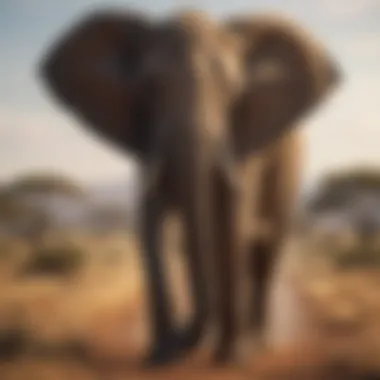
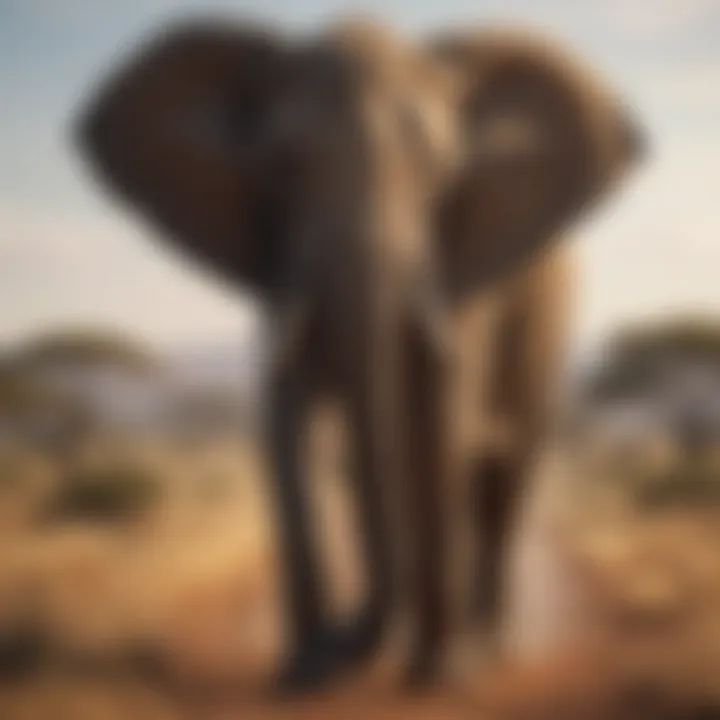
In summary, famous animal clips play a pivotal role in shaping our understanding of the animal kingdom. They entertain, educate, and inspire action, leaving a lasting impact on audiences of all ages.
Animal Conservation Through Clips
Animal clips hold a significant position in raising awareness about conservation efforts. Visual storytelling does not just entertain; it educates. It opens up a window into the lives of creatures that many may never encounter. Through these clips, people can nurture a connection with wildlife that might otherwise feel distant. It’s like inviting someone into your living room to meet a wild animal, even if they are on the other side of the world.
Raising Awareness About Endangered Species
Endangered species often find themselves at the brink of extinction due to various factors, such as habitat loss, poaching, and climate change. Animal clips play a vital role in shedding light on these issues. For instance, a clip showcasing the plight of the Amur leopard can spur viewers to care deeply about its future. When faces are put to the facts, such as seeing a leopard struggling to find a territory, the urgency becomes clear.
In addition, snippets from wildlife documentaries can create immediate emotional responses that statistics alone can’t show. Kids, parents, and educators often find that seeing an animal in its natural habitat can have a lasting impact. Simple yet powerful visuals can be effective teaching tools in classrooms, leading to discussions about conservation actions that can be taken.
- Emotional Engagement: Clips compel viewers to care by making endangered animals relatable.
- Informative Content: Facts presented in a visual format are more easily absorbed.
- Social Media Sharing: Clips can be spread easily on platforms like Facebook, reaching larger audiences and encouraging activism.
Funding and Support for Conservation Efforts
Animal clips are not only powerful in raising awareness; they also help gather funding for conservation initiatives. Documentaries often feature organizations dedicated to saving endangered species. By showcasing their efforts, these films can encourage viewers to contribute financially.
A classic example is the work of organizations like World Wildlife Fund and The Nature Conservancy, which often promote their campaigns through visual media. Being able to see where donations go—like to the protection of giraffes for example—can make a strong case for funding.
Moreover, it’s essential to consider that platforms like Reddit and YouTube can host discussions and fundraising efforts connected to specific clips, further bolstering support for wildlife conservation.
- Crowdfunding Initiatives: Clips often link to campaigns where viewers can contribute directly.
- Partnerships with NGOs: Many productions team up with reputable organizations to ensure that their content drives real-world change.
- Viewer Participation: Engaging the audience can lead to lasting support for conservation efforts well after a clip is viewed.
In closing, it’s clear that clips about animals serve multiple purposes in conservation. They not only raise awareness of species at risk but also harness visibility to drive funding. In doing so, they inspire action, creating ripples of positive change in preserving our planet's rich biodiversity.
Animal Behavior Explored
Understanding animal behavior opens a window to the intricate workings of the natural world. This topic not only fascinates but also holds immense significance for those creating animal clips. Exploring this subject can lead to deeper insights about the creatures that share our planet, their social interactions, and the lessons we can learn from them. It's no wonder that animal clips focusing on behavior have become essential tools in both education and conservation.
Understanding Social Structures
In the animal kingdom, social structures can vary immensely from one species to another. For instance, elephants live in matriarchal herds, led by the oldest female, while orcas travel in family pods governed by both maternal and paternal ties. Recognizing these structures provides viewers a glimpse into how animals communicate, cooperate, and sometimes contend with one another.
Benefits of Understanding Social Structures
- Enhanced Learning: Knowing the social dynamics among different animals helps children relate better to them.
- Promoting Empathy: When young viewers see animals interacting within their groups, it fosters a sense of empathy for creatures they may never encounter firsthand.
- Conservation Awareness: Highlighting the importance of social bonds in species like wolves or primates emphasizes the need to protect their habitats.
Videos like those showcasing meerkat sentry duty illustrate how members of a pack take turns watching for predators, showcasing teamwork and vigilance. This behavior not only keeps the community safe but also makes for captivating viewing.
Mating Rituals and Parenting
Mating rituals and parental care are essential chapters in the narrative of animal behavior. Different species present unique courtship behaviors, often rich in color and sound. For instance, during the courtship of the peacock, it's the male that struts around, flaunting his vibrant tail to attract females. Viewing such rituals through clips highlights the themes of beauty and survival.
Parental Care: The Heart of Animal Behavior
Parental involvement varies widely and significantly impacts young animals as they mature.
- Birds: Most birds, like robins, exhibit intense parenting, feeding their chicks until they can fend for themselves. Clips displaying this can inspire admiration for nature's dedication.
- Mammals: In contrast, many mammals, such as sea turtles, lay eggs and leave them unattended, focusing on survival rather than direct care. This approach varies across species and illustrates the adaptability of life forms.
"The myriad of mating rituals serves as a reminder that the animal kingdom is a theater of vibrant life, where survival of the fittest also sees the fit nurturing the next generation."
These themes are explored in many documentaries, making them not just entertaining but also educational. Clips featuring nurturing behaviors, such as the bond between a mother bear and her cubs, can evoke a sense of responsibility towards all living beings.
Through well-crafted animal clips focusing on these aspects, viewers can gain a holistic understanding of how behaviors shape the lives of different species while fostering a deeper appreciation for the delicate balance of nature.
Ethical Considerations in Animal Clips
The world of animal clips isn't just about entertaining footage or cute animal antics; it’s also a responsibility shared by content creators and viewers alike. In our exploration of the captivating animal kingdom through visual media, it's crucial to navigate the waters of ethics carefully. The importance of ethical considerations stems from a need to respect wildlife, ensure responsible content creation, and recognize the effect our portrayals can have on both animals and audiences. Both the awe and urgency in the representation of animals in their habitats require a conscious effort to adhere to ethical standards.
Respect for Wildlife
When crafting animal clips, the foremost respect should always be directed towards the animals involved. Wildlife is not merely a backdrop for our entertainment; these creatures have their rights, habitats, and natural behaviors that deserve protection from human interference. Film crews should prioritize securing the safety and well-being of animals over capturing the perfect shot.
That means using non-invasive filming methods that do not disrupt wildlife or provoke stress responses in animals. For example, a documentary showcasing wolves should avoid baiting them with food or intruding on their dens. Instead, filmmakers can rely on nature’s existing footage captured from a distance. This way, they respect the animal's living conditions, documenting their lives authentically and safely.
"It’s vital that we remember: the goal is not to conquer nature with our lenses but to understand and share its wonders responsibly."
Responsible Content Creation
The responsibility of content creators doesn't end with the filming process. Post-production and distribution also come laden with ethical choices. As narrators of these stories, creators should depict animals and their behaviors accurately, steering clear of exaggeration that leads to misunderstanding or fear. Misinformation can spread like wildfire, often altering public perception and policies regarding species conservation.
To foster a deeper understanding, videos should aim to educate. For instance, an engaging clip featuring elephants in their natural environment should not only highlight their playful nature but also discuss the challenges they face due to habitat loss and poaching. This dual purpose of educating and entertaining allows for both compassion and awareness to blossom in the audience.
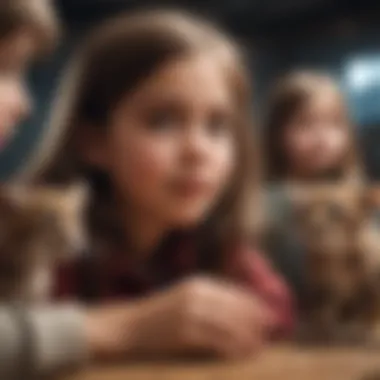
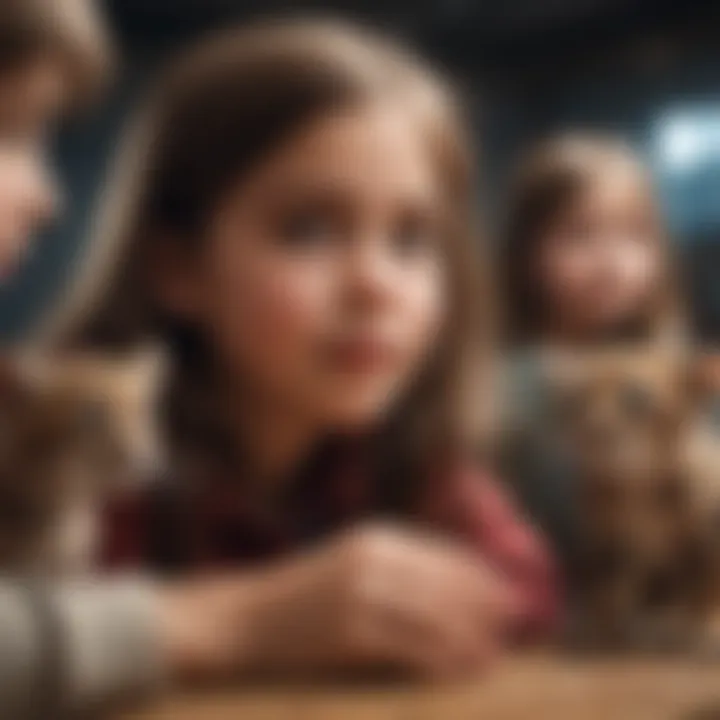
Here are some tips for ensuring responsible content creation:
- Prioritize factual accuracy when narrating animal behaviors.
- Clearly indicate if clips were staged or included any special effects.
- Promote conservation messages along with entertaining footage.
By adhering to these ethical considerations in both filming and production, we can create a more informed and empathetic audience that cherishes the beauty of the animal kingdom while recognizing the importance of its preservation.
Resources for Creating Animal Clips
Creating compelling animal clips goes beyond simply pointing a camera at a critter and hitting record. It’s an art form that combines technical skills, creativity, and a deep understanding of the subjects involved: the animals themselves. This section aims to highlight the essential resources that can significantly improve the quality of animal clips, making them not only entertaining but also educational and impactful.
Technical Skills and Equipment Needed
To capture the great moments that nature has to offer, one needs the right skills and tools. Here’s a closer look at both:
Essential Technical Skills
- Camera Operation: Knowing how to use your camera isn’t optional. Whether it's a DSLR, mirrorless, or even a smartphone, understanding settings like ISO, aperture, and shutter speed brings a significant advantage.
- Editing Skills: Post-production is where a good clip can become great. Familiarity with software like Adobe Premiere Pro or Final Cut Pro is crucial, as you can refine your clips, add sound, and even throw in some cool effects.
- Fieldwork Skills: Patience is your best friend here. Animals might not always perform on cue. Learning techniques for blending into the background and being quiet will help you get those precious shots without scaring away your subject.
Recommended Equipment
- Cameras: The Canon EOS R5 or Nikon Z6 are excellent for capturing high-quality images and videos.
- Lenses: A versatile zoom lens, such as the Canon EF 100-400mm, allows you to photograph wildlife from a distance without disturbing them.
- Tripod/Stabilizer: Keeping your camera steady is vital. A sturdy tripod or a gimbal for smooth movements can make all the difference.
- Sound Equipment: Clear sound can elevate your clips. A shotgun microphone, like the Rode VideoMic, helps capture the subtle sounds of nature.
- Batteries and Memory Cards: Always be prepared! Extra batteries and high-capacity memory cards ensure you’re not caught with a dead battery when a lion roars nearby.
By arming yourself with the above skills and equipment, you set a great stage for creating memorable animal clips that resonate with your viewers.
Storyboarding and Planning Content
Creating animal clips without a plan is like sailing without a compass. Some thought into storyboarding ensures the flow of your video is cohesive, engaging, and most importantly, informative. Here are crucial points to consider:
- Define Your Objective: What message do you want to convey? Knowing whether you’re highlighting endangered species or showcasing the unique behaviors of a particular animal will shape your content.
- Research Your Subject: Knowing your animals is key. Watching existing clips or reading up on the behaviors and habitats of the animals you’re filming provides depth to your footage.
- Outline Your Story:
- Visual Storyboarding: Sketching out scenes in advance helps visualize how your clips will look. Even simple doodles can serve as a solid guide during filming.
- Hook: Start with something that grabs attention. A fascinating fact or an unexpected behavior can do wonders.
- Content: Organize the middle section with interesting segments or anecdotes. Consider spacing out engaging visuals with factual information.
- Conclusion: Recap or provide a call to action. Encourage viewers to learn more or support conservation efforts.
In summary, a well-thought-out plan can sharpen your footage and keep your audience engaged. The joy of capturing nature's wonders deserves a touch of preparation, making your clips all the more delightful to watch.
"Planning is bringing the future into the present so that you can do something about it now." - Alan Lakein
By putting thought into both your technical approach and content planning, you can create captivating animal clips that will leave a lasting impression on your audience.
Future of Animal Clips
The future of animal clips seems to shimmer like a sunrise over a mist-covered savanna, marking a promising trajectory filled with innovation and deeper connections between viewers and the animal kingdom. With technology evolving at lightning speed, these clips stand at the crossroads of entertainment and education. They open new windows into animal behavior, conservation efforts, and biodiversity that can spark the interest in young audiences, thus molding future generations.
Innovative Technologies and Trends
In the realm of animal clips, innovation is the name of the game. New technologies like virtual reality (VR) and augmented reality (AR) are aiming to put viewers right in the heart of the action. Imagine being transported into the dense African bush to watch elephants interact as if you were right there, without needing to leave your living room. This immersive experience not only captures attention but also deepens understanding about animal behaviors.
Several trends are emerging alongside these technologies:
- Drones for Wildlife Filming: Drones enable filmmakers to capture stunning aerial views of animals in their natural habitats without disturbing them. This allows for a more authentic portrayal and helps in studying creatures like the elusive snow leopard without interruption.
- Live Streaming Safaris: With platforms like Facebook and Reddit, live-streamed wildlife experiences are becoming commonplace, allowing people to witness nature’s wonders in real-time. This immediacy can foster a sense of urgency around conservation issues too, as audiences are taken on spontaneous adventures into locations they may never visit.
- AI and Machine Learning: Artificial intelligence aids in analyzing vast amounts of data collected through various clips. It helps in identifying species and understanding patterns, which can be crucial in highlighting endangered species and their habitats.
As these technologies become more integrated into animal clips, the content moves beyond simple curiosity to a platform for awareness and action.
The Continued Role in Education
The role of animal clips in education is just beginning to blossom, taking a front-row seat in classrooms and homes alike. These clips are not only engaging but they also fit snugly into educational goals.
Through animal clips, educators can easily incorporate lessons about biology, conservation, and environmental science. Some noteworthy benefits include:
- Visual Learning: Young minds often absorb information better through visuals. Seeing animals in action—like penguins sliding on ice or wolves hunting in packs—cements the lessons that text alone may struggle to convey.
- Curiosity Spark: Each clip can act as a jumping-off point for discussions. When a child sees an animal engage in a surprising behavior, it can raise questions that lead to deeper investigative learning.
- Broader Perspectives: Clips featuring different environments and species around the globe help children understand biodiversity. This can cultivate empathy and inspire future activists for wildlife conservation.
"Learning about animals through clips creates a bridge between education and emotional connect, helping kids understand the world around them."
Finale
In summing up the themes presented throughout this article, it becomes clear that the realm of animal clips holds remarkable importance. These clips serve not only as entertainment but as vital educational resources that can foster a deeper connection between viewers—especially children—and the animal kingdom. Understanding the finesse in creating and consuming this kind of content is paramount for all stakeholders involved, including educators, parents, and creators.
Recap of Key Insights
To recap, there are several key insights that shine through:
- Diverse Formats: Animal clips vary greatly, from educational documentaries to short viral videos suitable for social media, expanding the ways in which one can engage with nature.
- Impact on Learning: These clips bolster educational endeavors, enhancing retention of information and sparking curiosity about wildlife.
- Conservation Awareness: They also play a pivotal role in raising awareness about endangered species and the challenges they face, thus challenging viewers to take action.
- Ethical Considerations: It's essential to balance the thrill of capturing these moments in nature with respect for wildlife and responsible content creation.
"Seeing wildlife in their natural habitat through clips creates an emotional bond that words alone cannot achieve."
Encouragement for Continued Exploration
As we draw this article to a close, it's crucial to encourage a mindset of continued exploration and learning. Young minds, in particular, should feel inspired to seek out more clips, documentaries, or even live streams from wildlife sanctuaries.
- Visit Recommended Resources: Families can explore platforms like Wikipedia, Britannica, and Reddit for discussions and recommendations on the best animal clips available.
- Interactive Learning: Engage children with activities inspired by the clips they watch. Perhaps they could sketch their favorite animals or even create their own storyboards based on fascinating animal behaviors they've observed.
Ultimately, the world of animal clips should not just be seen as a source for a momentary thrill but as a launching pad for a deeper understanding and appreciation of the natural world we share. By nurturing this journey, we lay the groundwork for a more informed and compassionate next generation.







